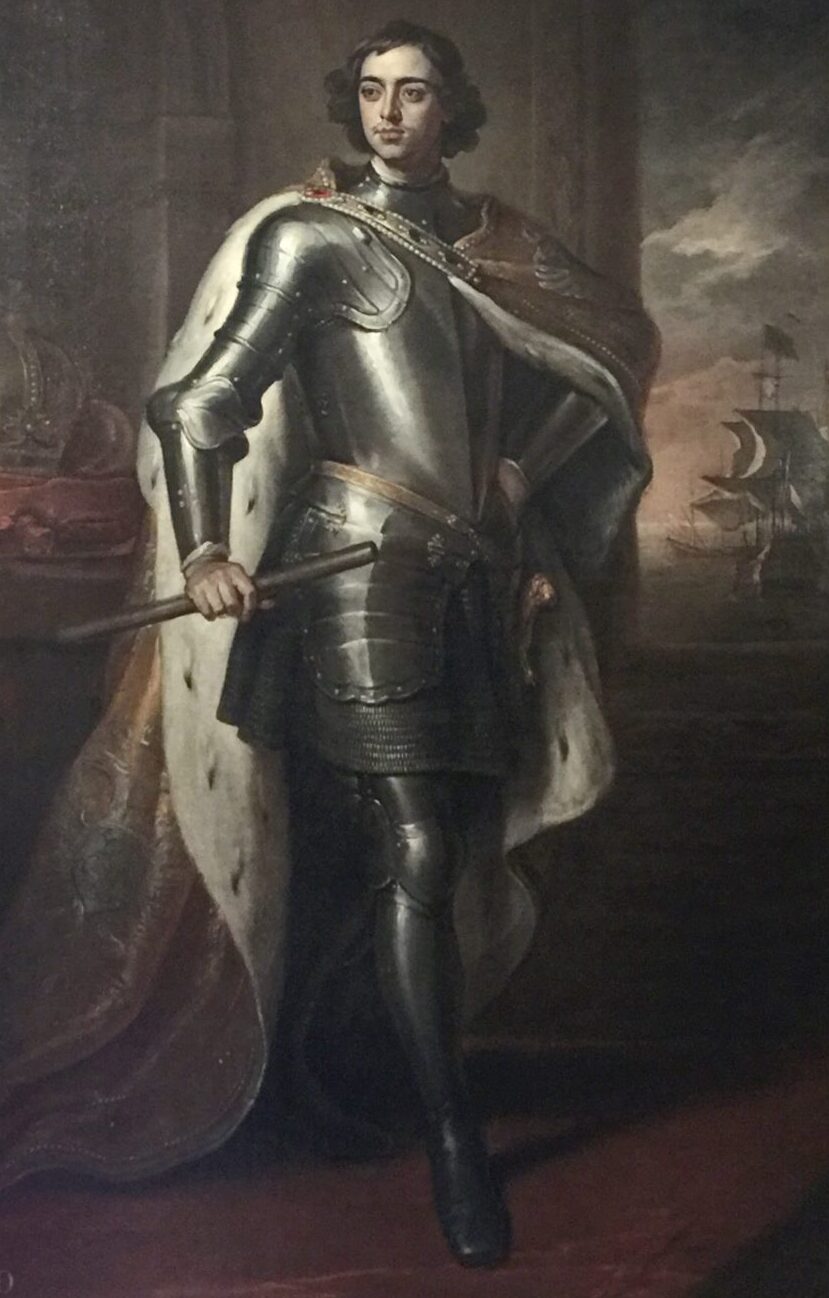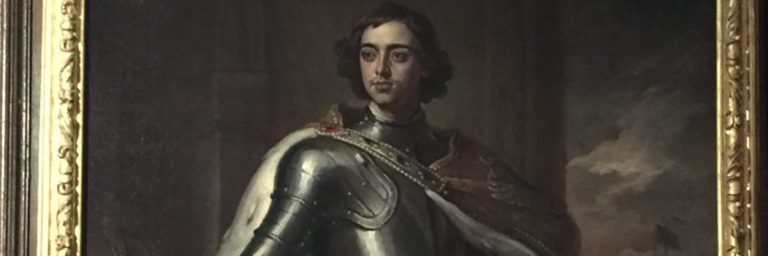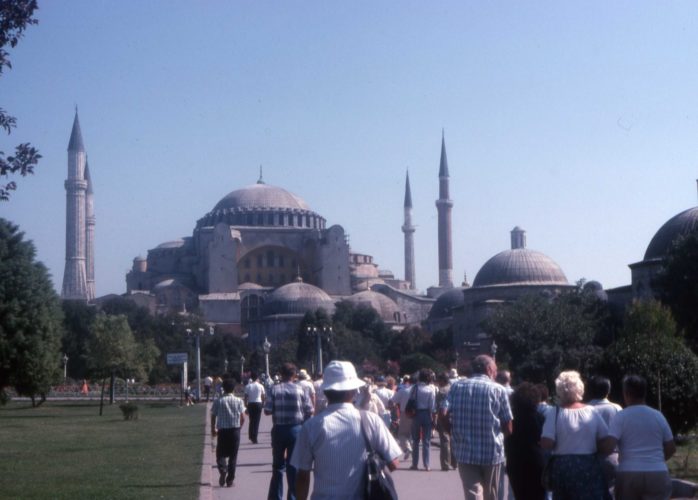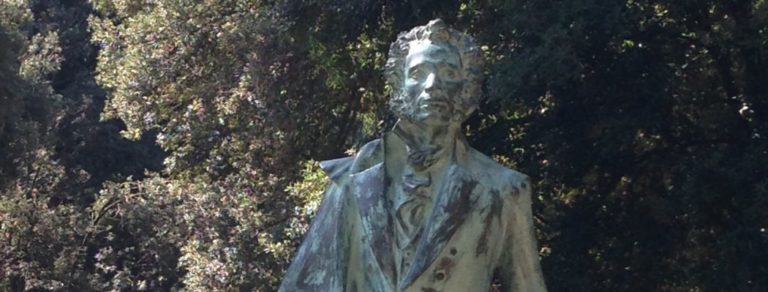The only thing worse than a brutal, autocratic, paranoid monarch is the chaos that seems inevitably to ensue when he dies. When Ivan the Terrible passed away, Russia fell into a fifteen year period called “The Time of Troubles”. Ivan’s successor, Boris Gudonov, had risen through the military ranks and married the Tsar’s daughter. That made him a trusted advisor and, ultimately, regent to the new underage Tsar. But Ivan had left a legacy of discontent that led to suspicious royal murders, rebellions, a parade of pretenders, war, and terrible famine. Boris died. The place fell apart. The Poles invaded. A million people died from starvation. (A Short History of Russia’s First Civil War: The Time of Troubles and the Founding of the Romanov Dynasty)
After beating back the Poles, a Grand National Assembly of nobles, clergy, and real people elected young Michael Romanov as Tsar in 1613 CE. It took them a month to find the sequestered lad, who became the founder of Russia’s second and last royal dynasty, the Romanov’s. This period of turbulence inspired not one, but two operas: Mussorgsky’s famous Mussorgsky: Boris Godunov (Bolshoi Theatre Production), adapted from a novel in verse by Alexander Pushkin, (the novel, Boris Godunov
), and Glinka’s lesser known Glinka: A Life for the Tsar, Overture & Suite
, recounting the legendary battlefield heroics of a peasant who saved Michael’s life.

Michael’s grandson, Peter, survived another complex succession intrigue, outlasted his sickly half-brother, his half-sister, and his mother, and took full charge in 1696. At this time in European history, Sweden was the bully on the block. The Thirty Years War had ended back in 1648, with Sweden occupying much of northern and eastern Europe, including Finland, the Baltic States and Poland.
Peter wanted a major port city that would give him access to Europe. He had not had any lasting success against the Ottomans on the Black Sea, so he picked a fight with the Swedes. To everyone’s surprise, he won, with the help of Sweden’s other adversaries. This gave him access to the Baltic, where he built his new capital, St. Petersburg. In theory, it was named after the famous apostle. (Peter the Great: His Life and World, by Robert Massie) However, we have noted the similarity to the name of a certain Tsar…
During his martial activities, Peter managed to visit Europe a lot. His major impression was that Russia lagged the other European powers in military might and social customs. He collected advice and advisors from several countries, particularly the French and the Dutch. From his window, he could see the his harbor and the new city. The new palace, Peterhof, built by 1725 CE, was his personal Versailles, a convenient place to showcase the artwork he collected from his travels in Europe. The palace and much of central St. Petersburg are UNESCO World Heritage Sites. (St. Petersburg: Russia’s Window to the Future, The First Three Centuries)
To his wife, Catherine I, he gave an estate outside of town that she converted into Tsarskoye Selo. This modest country home was turned into a sprawling palace complex by a succession of empresses including Catherine I, Elizabeth, and Catherine II the Great. The campus is also a UNESCO World Heritage Site.
Peter’s legacy was to bring Russia into the European sphere. He encouraged his nobility to travel to the distant capitals and to see what the modern world was like. The next two hundred years of Romanovs would take his advice, showing a particular fondness for Paris. (The Revolution of Peter the Great) By humbling the Swedish Lion and moving into Livonia, (parts of Latvia and Estonia), Peter changed the political dynamics of northern Europe. The Germans and Poles were back in control, though with a greater appreciation for the Russian behemoth.
Half way around the world, Peter caused another huge shift in global presence. Initially looking for a northern maritime trade route to Japan, Peter was curious to know if Russia was connected to the American Continent or if it was possible to sail to Japan. It is possible he also knew of the sea otter furs that could be found off his far eastern coast. In 1724 CE, he commissioned Captain Vitus Bering to find out. (Bering: The Russian Discovery of America) There is an entertaining, fictionalized account of Peter’s launch of the exploration project in James Michener’s Alaska: A Novel
that extends through the Russian colony at Sitka and the fur trade that sustained it.
Peter died just as Bering was heading east. By the time Bering returned from his first expedition in 1728 CE, Empress Catherine was also gone and Peter II was on the throne, but only briefly. Bering’s report must have impressed someone, as he was given more resources, probably by Empress Anna, though he shipped out on his second trip in 1741 CE, while infant Emperor Ivan VI was being usurped by Empress Elizabeth. He must have been glad to get away from the royal merry-go-round.
Of the 71 years following the death of Peter the Great, the Russian Empire was ruled by women for 67 years. Peter’s daughter, Elizabeth, managed to enlist Swedish support for her royal coup. Then, she turned on the Swedes, who were hoping to take St. Petersburg, and pushed them back to their borders. As the rest of the European powers fell into a global conflict called The Seven Years War, Elizabeth kept Russia’s military participation to a bare minimum. However, from a diplomatic perspective, she humbled the Prussian aggressor, Frederick the Great. Elizabeth’s death saved Frederick from his own. (The Global Seven Years War 1754-1763: Britain and France in a Great Power Contest (Modern Wars In Perspective))
Elizabeth’s successor, Peter III, lasted six months. In yet another messy succession, involving jealousy, infidelity, murder, and rebellion, Catherine II the Great, seized the empire’s scepter in 1762 CE. The daughter of a Prussian prince, she would reign for 34 years. She had come to Russia as a 16 year-old, arranged child-bride. Her marriage was a disaster and she would, ultimately, orchestrate the murder of her husband. (Catherine the Great: Portrait of a Woman, by Robert Massie)

Catherine’s long rule came at an interesting time in history. The European nations were all connected or aligned by treaties, marriages, familial relations, and economic realities that shifted constantly. The Seven Years War was just an exclamation point in a string of conflicts.
Theories of humanist enlightenment started to suggest that monarchies were not the only appropriate government. Fourteen years after Catherine became Empress, the Americans revolted against her friend, George III. Three years before Catherine died, Marie Antoinette, whose arranged marriage saga sounded very similar to Catherine’s, was beheaded by the new French republic.
In her early years, the ideas of the enlightenment appealed to Catherine. However, as she became the veteran autocrat, she backed away from their teachings, fearing their implications. She was all for improving education for nobility, women, and even the merchant class. However, the lot of the serf population did not improve, and she actually faced a number of insurrections. The Romanovs ruled as absolute autocrats. The ladies: Catherine I, Elizabeth, and Catherine II, were no exceptions. They did amass one heck of an art collection: The Empress of Art: Catherine the Great and the Transformation of Russia.
Russia and the Ottoman Empire had a running feud for over three hundred years. During Catherine’s watch, Russia had the upper hand, taking large sections of the Caucasus, Crimea, and Ukraine into the Empire. The good news was that this finally gave Russia the fair weather, year-round navy port on the Black Sea. Odessa was developed from a seaside village to a major city to suit this objective. Walking the streets of Odessa today, you might think you were in Paris. The resemblance in architecture in some sections is striking.
The downside to these new territories was that they were largely Muslim populations. Though Catherine did institute significant tolerance measures, the tensions of this minority persisted and remain to this day.
Poland was the other important acquisition for Catherine. At the end of the Seven Years War, in 1764, Catherine placed her lover, Stanislaw Poniatowski, on the Polish throne, effectively controlling it. To quell any thoughts of democratic freedom, she split The Poland-Lithuania confederation between Austria, Prussia, and Russia, taking Belarus, Latvia, and Estonia for the Empire. The convoluted political associations and rivalries across the European landscape surely inspired George Washington’s caution to the young American nation to “avoid entangling alliances.”
The Age of Enlightenment was a confusing time for Russian autocrats. Catherine’s son, Paul I, tried to mediate Europe’s squabbles by reasoned negotiation. It didn’t work and even he was dragged into the fighting. His son, Alexander I, was the lucky Tsar to deal with Napoleon. The cagey Frenchman convinced impressionable Alexander that he would split the world between them. For a while Alexander believed him.
After the devastation wrought by the Invasion of 1812, Alexander realized he had been taken for fool. His liberal views dissipated and were finally completely dispelled by the cold-blooded realist, Baron von Metterich, as the European map was redrawn following Napoleon’s demise. Alexander did manage to pick up Finland in the process. (Alexander of Russia: Napoleon’s Conqueror (Grove Great Lives Series))
While the rest of Europe continued to feel the Enlightment tension between royalty and everybody else, Russia’s incumbent, Nicholas I, turned up the autocratic heat. He crushed rebellions in his piece of Poland, and assisted other monarchs to defend their crowns during the watershed year of 1848, when no less than seven Europeans nations had liberal revolts. His biggest miscalculation, however, was to take on the Ottomans, again. His victory and the Crimean Black Sea territories that he gained represented the absolute furthest extent of Russian expansion.
The possibility that Russia would have military access to the Mediterranean through the Bosporus Straits alarmed the rest of Europe. Though nobody really liked the Ottomans, suddenly, the rest of the continent joined them against the Tsar. The Crimean War pushed Russia back from its Black Sea perch and specifically prevented Russian warships from entering the Mediterranean. (The Thin Red Line: The Eyewitness History Of The Crimean War) That has remained a global strategic objective all the way to the end of the Cold War.
Alexander II took over from Nicholas I and was obliged to clean up the mess of the Crimean War. He then managed a feat rarely achieved by any Russian Tsar: 25 years without another war. Instead, he focused on liberal reform. In March of 1861, two and a half years before Lincoln’s Gettysburg Address, Alexander II emancipated the serfs. While not technically slaves, the serfs were definitely close, and distinctions are very slim. This significant shift in the Russian social structure helped set in motion the forces that brought down the monarchy.
Marxist ideas had taken hold with small groups in Germany and Russia. The Revolution of the Working Class was a concept openly discussed in radical newsletters. In 1881, a terrorist group assassinated Alexander II. The magnificent Church of our Saviour of the Spilled Blood, (above), is built on the site of his murder. His two successors, Alexander III and Nicholas II, reversed the liberal momentum and took autocratic suppression back to an intense level. (Nicholas and Alexandra: The Classic Account of the Fall of the Romanov Dynasty)
The Romanov Empire lasted 304 years. Its defining characteristic was absolute autocracy. When it became necessary to change, it could not. Absolute is absolute. Anything less was seen as capitulation. Nicholas II was basically forced to experiment with a people’s legislature. The experiment collapsed under the weight of World War I. Imperial Russia, a force to be reckoned with across Europe and Asia, disappeared in the blink of an eye.





